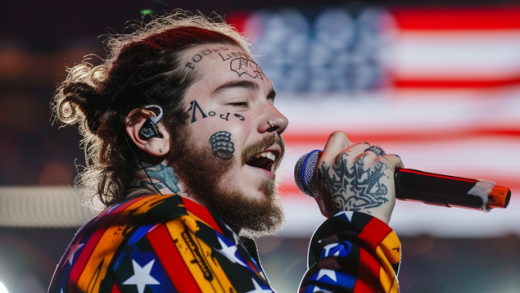Well-balanced partnerships of equal and mutual commitment among two parties, exchange positions of control with a seesaw’s regularity. One lifts as one descends, the other plops foreseeably downward, the process is repeated. To watch this tradeoff is like being a parent yawning at the playground perimeter.
How much more eye-catching, variable, and turbulent is a three-way exchange, in which allegiances and arrangements of power fluctuate dynamically—and not in a predictable pattern of ascent-descent, but kaleidoscopically, in all directions. Today, someone is the favored beloved, tomorrow the other is elected. Readers’ fixation on these rotating tensions speak to our deepest fears of abandonment and our zest for carnage.
Why a triangle necessarily? Why stop there? Three insiders is a suitable number and more than enough. Trying to follow a quartet becomes like watching people move around an airport: Complicated in bad ways, erratic and baffling. See Patrick Marber’s angsty Closer, an old-fashioned drama perpetuating the myth that love-is-suffering in a spectacular hurt-and-be-hurt pileup of affairs. As Goldilocks demonstrated, three participants is just right.
Is a love triangle necessarily unstable? Is it possible for all three participants to be on equal footing in a love triangle? Is someone always on the outs?
In my own personal life, I know a trio of very peaceable males who are engaged in a trilationship. While they claim that, despite the apparent nonconformity, the arrangement is in fact very conventional, and equally favorable for all involved—they have pointed out that there is still progress to be made in terms of mundane, material support for groupings of this sort. Even a king-size bed is small for three, and one partner often sleeps elsewhere.
One of my favorite contemporary explorations of the love triangle is Alfonso Cuarón’s 2001 film Y Tu Mamá También, a love story of self-discovery and burgeoning sexual freedom between two 17-year-old boys and an older woman, combined with the emerging liberties of a newly democratic Mexico. The sexual constellations between the trio shifts very naturally throughout the film to mean something different within any single scene: influence, transgression, and ultimately a scene of such honest connection that it implodes the relationship.
This shifting, prismatic rotation of allegiances is what attracts us readers to the love triangle again and again, and what makes writers continue to devise them. My debut novel, Alice Sadie Celine, is the story of a woman of immoderate appetites who falls in love with her daughter’s best friend. I wanted to show women in this way: hungry and curious. The triangle forces the three women to meet each other—and themselves—head-on, as mother and daughter, lovers, and friends in a way that a two-way thoroughfare simply wouldn’t permit.
Here are eight of the most inventive literary explorations of the love triangle. They are mostly novels, with one memoir in the mix.
Euphoria by Lily King
The story of brilliant young anthropologists—a trio of social, cultural, and intellectual sophisticates—doing fieldwork on location in New Guinea. This novel is inspired by the life of the vanguard anthropologist Margaret Mead, who famously emphasized cultural relativism, rejecting biological determinism in favor of cultural determinism, especially highlighting the social environment. When the young Mead stand-in and her husband commit to an ill-fated collaboration, a frenzied love affair blossoms under the foul stink of prewar ethnographical anthropology and colonialist fixations on possession and control.
Incendiaries by R. O. Kwon
In the wake of a paralyzing grief exacerbated by a yoke-like guilt, a young woman is caught between her painless, unostentatious college boyfriend and an extremist cult leader who begins to stand for belief itself. This slender novel explores the expediency of a youthful naïveté when carefully considered beliefs butt up against unexpected passions and asks what it means to truly commit: to politics, religion, or love.
Sacrificio by Ernesto Mestre-Reed
Bodies pile up in this historical reframing of a group of HIV-positive counterrevolutionaries who design a challenge to Fidel Castro’s horrific human rights abuses against a regime that targeted LGBTQ+ Cubans and Cubans with AIDS. Not the least of these bodily dissociations is a lover who becomes a brother—and subsequently, the brother of that brother. A portrait of a nation collapsing under the weight of oppression, the novel depicts Cuba in the post-Soviet 1990s. The Spanish language herein goes untranslated, further disorientation for the English-language reader. The narrative rushes with a fatalistic and cascading force between past and present. The torrents of revolution play out as terrorism and espionage roil. Food and sex provide rare respite from self-destruction, a love born of grief, and the shattered idealism that accompanies the dissolution of Socialist dreams.
Faces by Tove Ditlevsen
A novella of infidelity and insanity—or what happens when Gitte, Grete, and Gert fatefully intersect. Told in lacerating prose, this novel is drawn from the life of the author (best known for her memoir in three volumes, the Copenhagen Trilogy) and explores the nature and meaning of literary success. The narrator is witness to a triangle between the couple’s housekeeper Gitte and his prior lover Grete, who died by suicide. It is no accident that these names point toward and ultimately away from one another. The reader feels as driven to madness as the narrator is. This broth of delusions is offset by the glaringly tangible actuality of the psychiatric hospital setting in which the narrator is stationed.
Malina by Ingeborg Bachmann
If readers love an unstable triangle, how about one in which one participant may not even exist? In this fragmentary novel of female loss of identity under male dominance, an abstracted love triangle plays out, without the narrator ever convincing the reader of the participants’ definite existence. Who is Malina? The purpose of the novel seems to be that one can hold onto nothing, rendering even our own humanity simply allegorical.
Talking It Over by Julian Barnes
This London-based love triangle features newlyweds, and two pairs of friends, one old and one new; and uses revolving points of view to question the nature of purported veracity in any storytelling. Cruelty runs as an undercurrent beneath the characters’ quotidian concerns. A retelling of the film Jules et Jim, unusual for the fact that, like a swirling eddy, the characters are pulled into a love triangle not just once, but twice, as well as out of celluloid and into a postmodern context.
Machines Like Me by Ian McEwan
This alternate history, set in a 1982 in which the UK lost the Falklands War to Argentina, raises questions of human blunder and of machine consciousness. When Charlie Friend blows his inheritance on a new A.I. robot companion named Adam, the “ambulant laptop” begins to assert its own demands and withdrawals until the couple find it impossible to break free. The difficult situation results
in a push and pull that threatens to topple the couple’s domestic, and romantic equilibrium. Can a machine love? Perhaps more lingering: can we love a machine? Stakes heighten when a child enters the mix.
Also a Poet by Ada Calhoun
A memoir of a young heroine attempting the impossible task of competing for her father’s affections against a legend of exquisite literary renown. Ada Calhoun’s father, the great Peter Schjeldahl, attempted to write a novel of his hero, Frank O’Hara, and Calhoun picks up the mantle, attempting to complete it. In one sense, the Calhoun’s memoir reads like a question to be solved, as Calhoun inadvertently unravels a sense of her father, a parent who sought emotional distance in order to safeguard his creative efforts, as she reconstructs the life of the great poet. In another, a story of knotted affections between three creators. Whichever way you frame it, this memoir illuminates three artists’ pledges and obligations to work, artistry, and family; and complicates the ways in which we venerate our heroes.
The post 8 Books that Explore the Power Dynamics of Love Triangles appeared first on Electric Literature.
Source : 8 Books that Explore the Power Dynamics of Love Triangles











